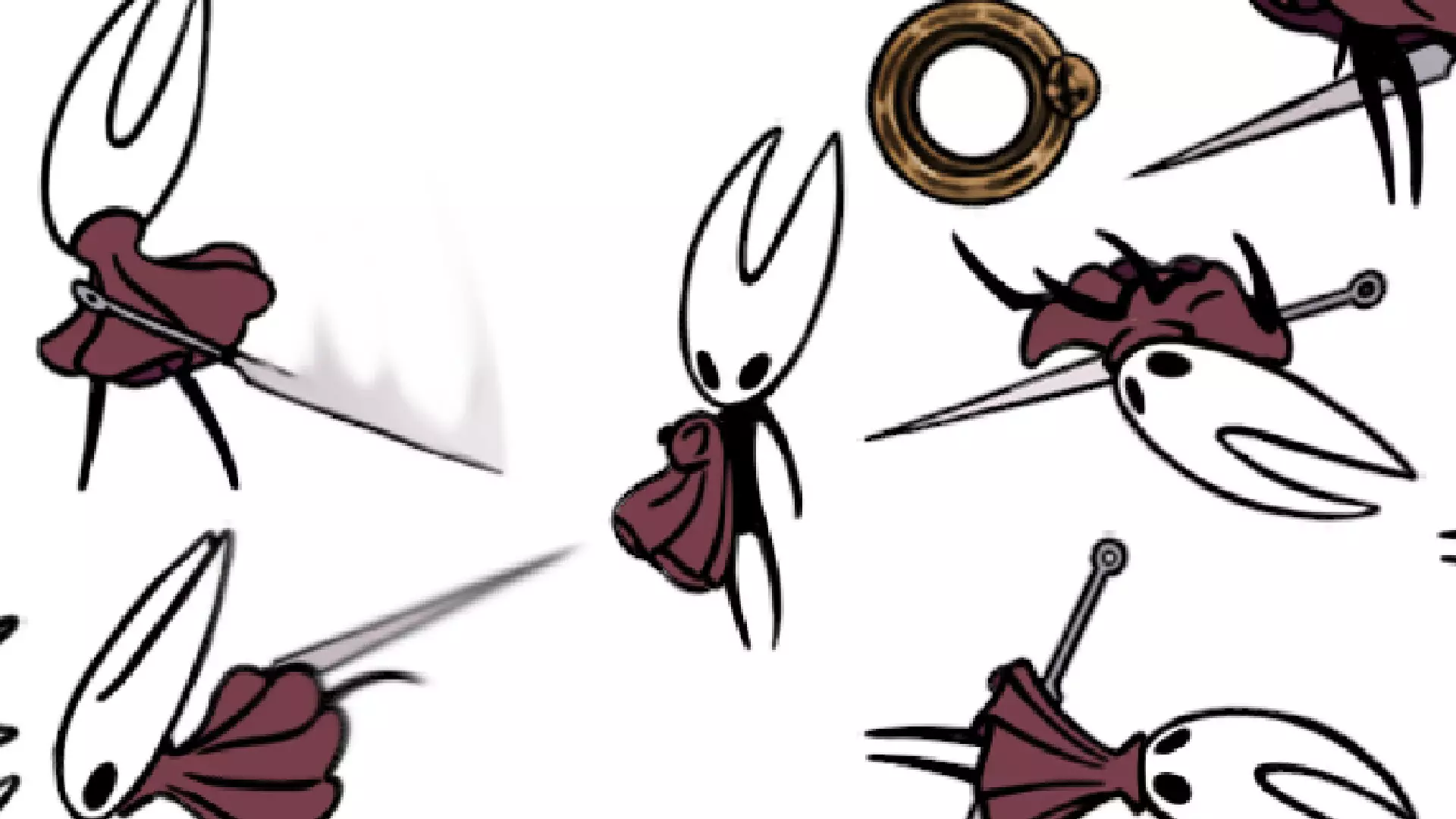The anticipation surrounding *Hollow Knight: Silksong* continues to grip the gaming community, especially with the recent announcement that it will be playable at an Australian museum exhibition. It’s a brilliant move, as exhibitions can act as live stages for experiencing interactive art. Adding fuel to the fire of excitement, a newly revealed sprite sheet unveiled numerous animations of the game’s protagonist, Hornet. However, the focus among fans has shifted dramatically from the gameplay details to one peculiar frame showcasing Hornet in what can only be described as a rather revealing pose.
The Community’s Response: Mixed Emotions
The revelation that Hornet appears devoid of her signature cloak has caused quite the stir. Behavior on platforms like Reddit demonstrates an amusing intersection between surprise and perplexity. Gamers are inundated with questions: “Is this sprite real?” and “What does this mean for Hornet’s character?” These queries almost echo a sense of vulnerability; fans are struggling to reconcile this unexpected portrayal with their preconceived notions of the character they’ve grown to love. The sprite is not merely a visual detail but a potential cultural commentary on autonomy and the nuances of representation, even within a fantasy framework.
Beyond the Surface: Art’s Provocative Nature
Images and discussions surrounding Hornet’s uncloaked form reveal deeper layers to the game and its art. One can argue that the act of revealing Hornet in such a way challenges the traditional boundaries set by character design in video games. While some might see it as an unnecessary gimmick, I view it as an artistic choice with potential significances regarding vulnerability and nature. Characters in gaming are often safeguarded by armor or clothing that symbolizes their strength; stripping back those layers can be read as a powerful commentary on authenticity in a world laden with façades.
The Internet’s Intrusive Lens
Interestingly, this revelation has not merely sparked discussions about character design; it also delves into the broader implications of the internet’s relationship with sexuality and representation in gaming. As highlighted by publications like *PC Gamer*, the tendency for the community to sexualize even the most innocent depictions is nothing new, but the situation surrounding Hornet raises questions about how creators navigate these cultural waters. Team Cherry, the developers behind *Hollow Knight*, unintentionally thrust themselves into this conversation by simply presenting a sprite that could easily be interpreted within various cultural contexts.
Where Art Meets Community
In an era where social media acts as both an artist’s gallery and a critic’s platform, every release and every detail can be dissected and re-contextualized. *Hollow Knight: Silksong* continues to bridge the gap between art and community reactions, where even the most whimsical details can unravel discussions of societal norms and expectations. Hornet, standing unveiled and unadorned, allows us a moment to ponder not only her role in the narrative but our overarching response to such nudity in an art form designed for entertainment. It begs the question—what else are we missing beneath the layers of code, art, and community reaction?

